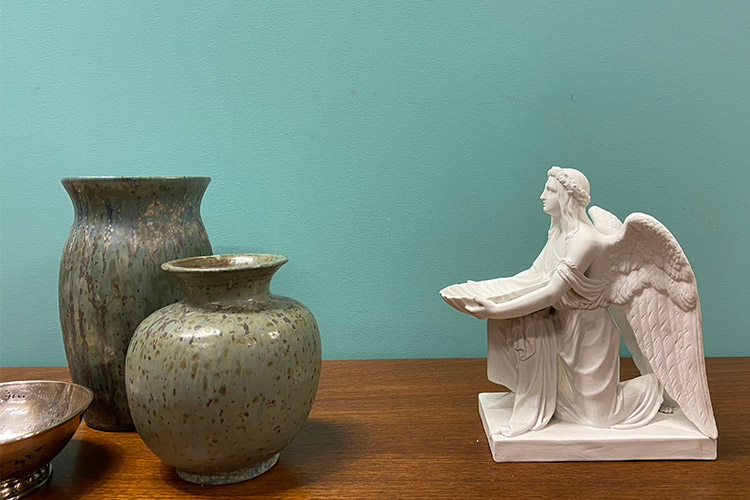
Thorvaldsen's Artwork in Biscuit Porcelain
A larger collection of biscuit porcelain figures and reliefs based on the artwork of Bertel Thorvaldsen is now up for Online Auction. The collection, which is mainly from the 19th century, tells the story of the sculptor's enormous popularity and at the same time provides an insight into the early production of the Royal Porcelain Factories.
The World Famous Bertel ThorvaldsenThere has probably never been a greater international artist in Denmark than Bertel Thorvaldsen (1770-1844), and although he lived most of his life in Rome, his influence on contemporary spiritual and cultural life in Denmark was enormous. When it became known in 1828 that he wanted to donate his artwork to the city of Copenhagen, money was raised to build a museum that was inaugurated in 1848. The people flocked to the newly opened museum and tripped over each for the chance to admire their countryman's artwork. |

|
Thorvaldsen Mania
It is, therefore, no surprise that the 19th century was strongly influenced by Thorvaldsen and his art. In Danish homes, one could not avoid in one way or another seeing his works forming some kind of essential part of the decor. Whether the works were reproduced in copper engravings, letterheads or porcelain, the motifs of Cupid, Venus, Hercules and other mythological figures or Christ from Our Lady's Church were a sign of good taste. Demand was high, the concept of copyright was not invented yet, and the market was quite lucrative for the Royal Porcelain Factories as well.
19th Century Modern Art IndustryShortly after the Royal Copenhagen Porcelain Factory was founded in 1775, figures were made of biscuit porcelain – undecorated porcelain fired twice. This was completely in line with the style of the time and was extremely popular throughout the 19th century. From the beginning, the works of well-known sculptors were reproduced, and nothing was more obvious to use than the works of Thorvaldsen. But the factory would soon face competition. Bing & Grøndahl opened their sale of the figures in December 1854 and announced the following in a newspaper: “The factory will produce biscuit porcelain works, in particular copies of Thorvaldsen’s work, for which the models will be made under the supervision of Professor Bissen." Both the Royal Copenhagen Porcelain Factory and Bing & Grøndahl exhibited internationally and in that way helped spread the awareness of Thorvaldsen's works outside of Denmark, but over time interest declined and people’s style preferences in their homes changed as well. From 1920, production was limited, while the two reproductions "The Day" and "The Night" were still popular and presumably still hung in many homes. It is also these two reproductions that make up a large part of the plaques in the collection. |

|

For further information, please contact:
Alexandra Nilsson: +45 8818 1166 · ani@bruun-rasmussen.dk